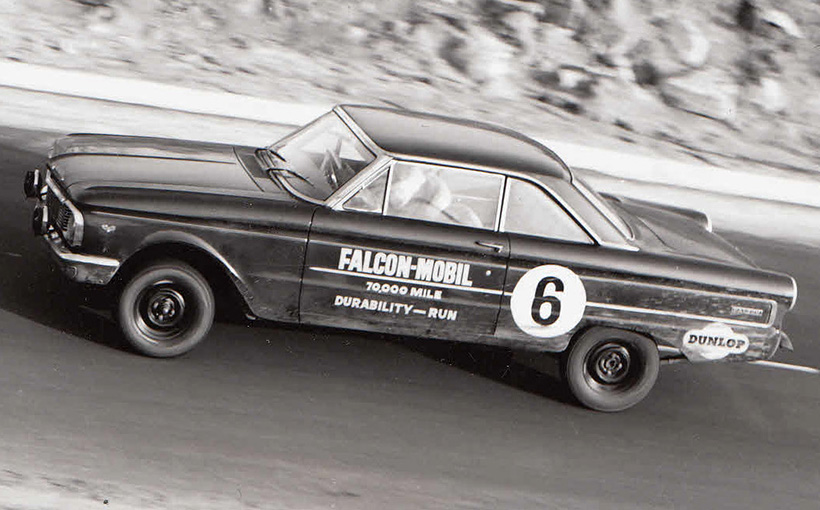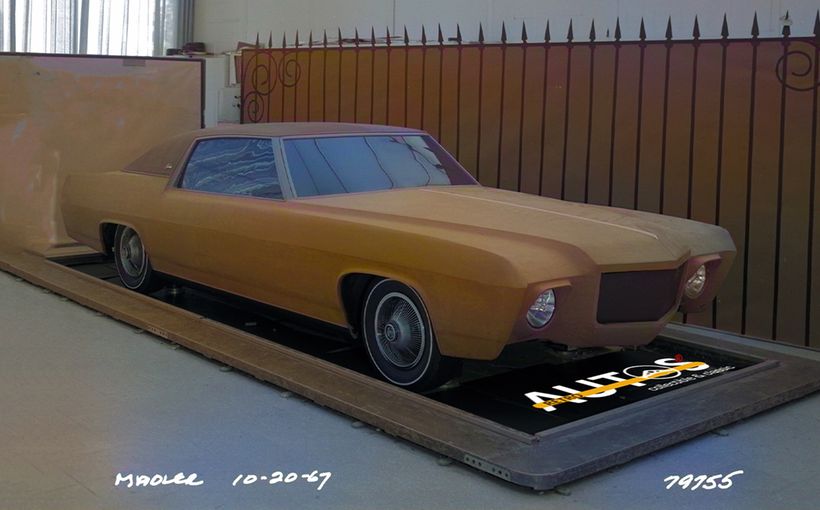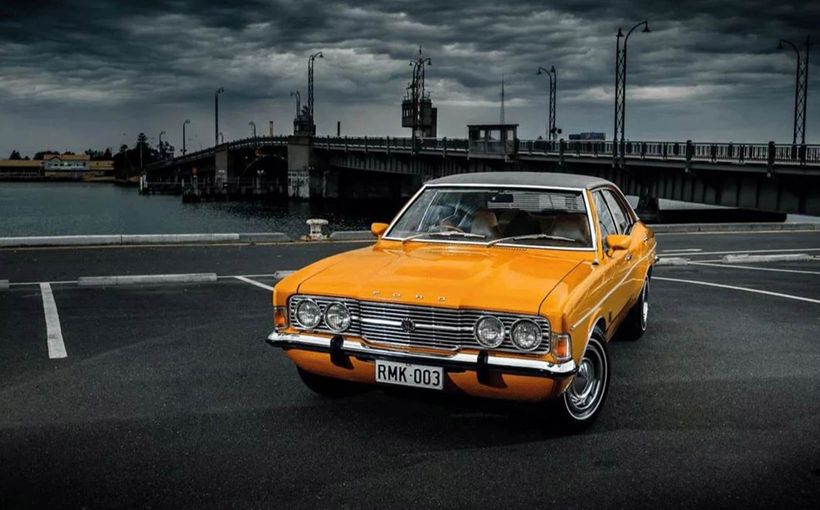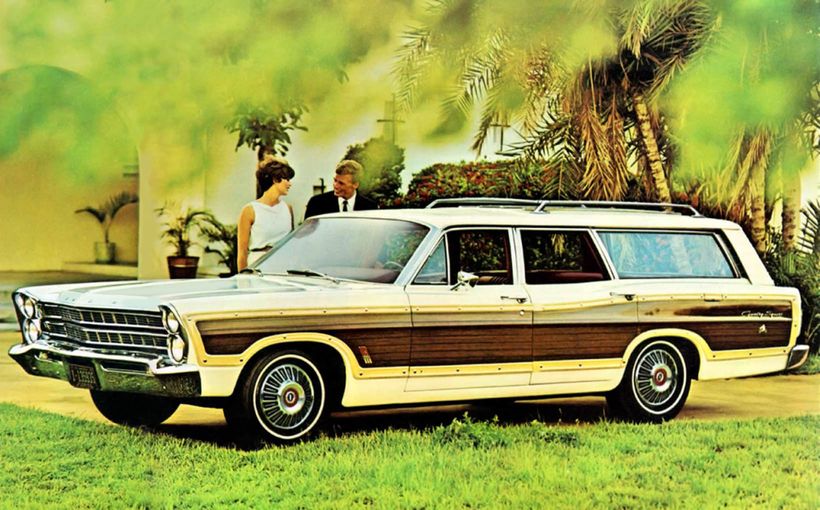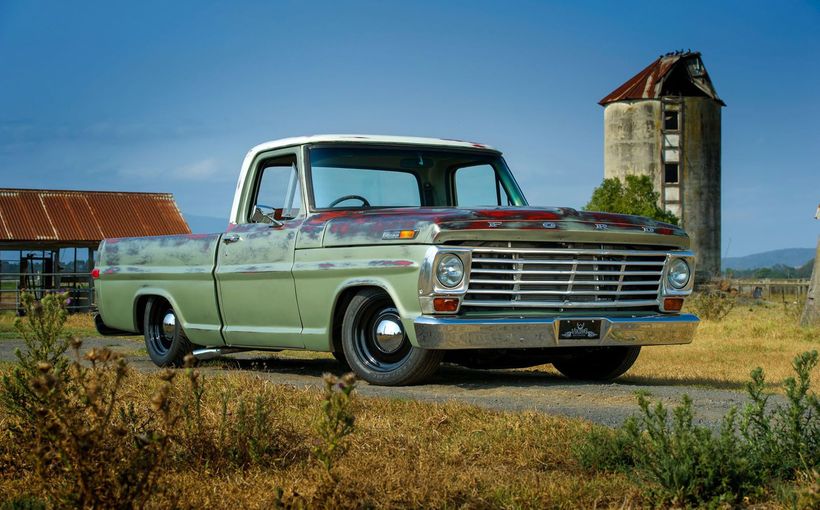XP Falcon: The crazy 70,000-mile gamble that saved Ford Australia

In 1965 Ford Australia was in big trouble. Falcon sales had tanked due to durability problems with the early models and dominant rival GM-H was closing in for the kill. The blue oval’s audacious solution was as desperate as it was inspired. Launching its new make-or-break XP Falcon with a highly publicised nine-day torture test saved Falcon and ensured Ford Australia’s future.
What was officially known as the Falcon-Mobil 70,000-mile Durability Run was the brainchild of the brilliant Bill Bourke who arrived in Australia in February 1965 to take up his role as Ford Australia’s new marketing and sales manager. He would later become managing director.
Bourke, who was working as Ford Canada’s sales manager at the time, was hand-picked by Ford Australia boss Wallace Booth; a pragmatic Detroit numbers man sent to Australia two years earlier with a clear directive from US head office to either turn around the struggling fortunes of the company’s Australian operations or shut them down.
Bourke was a rising star in the Ford empire, with a reputation for getting things done. Booth knew that if he was going to turn around entrenched negative perceptions of the Falcon he needed a guy capable of creating bold marketing concepts that challenged convention.
Bourke was the right man for the job and kicked off his career in Australia with the subtlety of a sledgehammer. The launch of the new XP Falcon range was due in March 1965. Bourke knew Ford needed to lay it all on the line with a bold marketing concept that would get people talking positively about Falcons and erase any doubts about the car’s ruggedness and durability.

He devised a gruelling 70,000 mile (112,000 km) Durability Run that would require a fleet of brand new, showroom stock XP Falcons to maintain an average speed of more than 70 mph (112 km/h).
No one knows how Bourke arrived at his 70,000-miles-at-70-mph equation, but the realisation of how tough this assignment was going to be was not lost on the press or the public. To hit the 70,000-mile (combined distance) target would require five cars to be run non-stop at punishingly high average speeds for nine gruelling days and nights.
Many Ford insiders thought Bourke was nuts. This was a crazy gamble with no guarantee of success.
A final act of desperation by a car company with everything to lose if it failed - and so much to gain if it succeeded. It would also play out in front of a large on-site media contingent, so there’d be no fudging. This was do-or-die stuff.
The fact that it proved to be such a spectacular success was not only due to the big picture thinking and sheer bravado of Bill Bourke. Ford’s competitions manager Les Powell co-ordinated the marathon nine-day run, Harry Firth prepared and drove the cars, a large team of drivers put in a huge effort and a young John Sheppard led a team of hardy mechanics and panel beaters who worked many mechanical miracles in keeping the flying Falcon fleet running.

Hell on Earth: Ford’s Vehicle Proving Ground
The venue chosen to stage the Durability Run was Ford Australia’s brand new Vehicle Proving Ground set into an expansive 700-hectare patch on the rocky, granite boulder-strewn slopes of the You Yangs Ranges near Geelong.
This was many years before the steeply banked, high speed oval track was constructed on the site in the early 1970s, which would have been an obvious facility to use had it been available in 1965.
On reflection, it was fortunate that it did not exist at that time, for it could not have provided the same drama and excitement as the 2.68 mile (4.3 km) Basic Durability Road chosen for the run.
It was designed to replicate a typical stretch of Australian bitumen road that incorporated many of the hazards faced by local drivers on long interstate trips.
This new circuit was a potential car-muncher that included fast left and right-hand sweepers, some tricky off-camber turns, a sharp belly-crunching dip and a steep 1-in-4 climb to the highest part of the track which ended in a blind approach to a near 90-degree left-hander.
The longest section of straight road was less than 400 metres in length so the cars were constantly cornering. And as the entire circuit took advantage of the natural contours of the rugged landscape, it was lined by massive granite boulders and rock formations that were perilously close to the track in some places.

Given that the Basic Durability Road was primarily designed for testing road vehicles at typical touring speeds of 35-40 mph (56-64 km/h), the much higher 70 mph (112 km/h) average required for the Durability Run would present a colossal challenge for cars and drivers. Over nine days, it would amount to the equivalent distance of 140 Bathurst 500s!
Incredible as it may seem, Bill ‘Blue Sky’ Bourke publicly announced the Durability Run ‘off the plan’ so to speak. At that stage the new circuit’s bitumen surface was yet to be laid but was scheduled to be completed several weeks before the start.
Unfortunately, unforeseen delays meant the laying of the bitumen track was only completed 10 days before the start which was not sufficient time for the hot mix to cure properly. As a result, at least one large pot hole emerged on one of the high speed sweepers during the event, which required some daring patch repairs by the road crew between speeding cars.
When Bourke finally inspected the completed circuit, by which time it was too late to cancel, the enormity of his gamble and the odds against it succeeding became glaringly apparent.
If Bourke felt he was about to trigger what many of his colleagues feared would be one of the biggest disasters in Ford’s corporate history, he wasn’t showing it. He’d made the commitment -it was a case of crash or crash through. The start date was Saturday April 24, 1965.

Firth and his Falcons
As Ford’s contracted competitions tuner and ace rally/race driver, Harry Firth was given the job of preparing the fleet of XP Falcons.
The Confederation of Australian Motor Sport (CAMS) supervised the attempt, to ensure formal recognition of any records that were set. CAMS stipulated that a total of six cars could be used, but that only five would be allowed on the circuit at any one time. The sixth car was a spare that could only substitute for another car if sidelined for repair work.
Ford supplied Firth with half a dozen brand new XP Falcons, in a mix of four-door sedan and two-door hardtop body styles, 170 cid (2.8 litre) Pursuit and 200 cid (3.3 litre) Super Pursuit engines and manual and automatic transmissions.
Harry chose a sleek red hardtop with the 200 Super Pursuit engine and automatic for himself and John Reaburn to drive, which was dubbed ‘The Dreamboat’ by other drivers. No surprise that it also carried No.1 on the doors.
The only other hardtop in the fleet, a black two-door with the 200 Pursuit engine and automatic, was nominated as the spare car and carried No.6. Even though it was a spare, it would be called into action often over the nine days, get severely damaged and end up completing as many miles as some of the other cars.

The remaining four XPs, which carried ID numbers 2, 3, 4 and 5, were four-door sedans with 170 Pursuit engines and three-speed column shift manual transmissions. Firth recalled what was involved in the preparation of the test track and the cars in his ‘Ford and I’ memoirs published by Chevron:
“I went down there with Les Powell, the competitions manager, to set the track layout, including having corners modified so that lap speed was high enough and the course was not too dangerous or too hard on the car. Once this was established, I set a benchmark lap time and told him that’s what to aim for.
“In preparing the cars, we did the normal blueprinting and balancing and even ported the heads – they were very good cars! We knew we had to put in proper brake linings and brake fluid, for instance. We had done a fair bit of running with those early Falcons by then and we knew what to expect durability wise and that is why I set a lap time to stick to because it was a speed at which I knew the cars could last.”
Firth’s preparations also included fitting a pair of powerful driving lights to each car which would prove invaluable during the long night stints.

The moment of truth
There was nervous anticipation and a sense of fear of what was about to unfold when MD Wally Booth flagged the five cars away at precisely 8.28 am on Saturday April 24 to officially start the 1965 Mobil-Falcon 70,000-mile Durability Run.
In the days leading up to the start, a pit lane had been established opposite the start-finish line where the cars would make countless stops for fuel, oil, new tyres, new drivers and repairs. It was to become a hive of activity around the clock for teams of weary mechanics, working through the night under powerful flood lights and keeping warm next to crackling camp fires.
A mini tent city had been erected behind the pit area to accommodate the drivers, mechanics, event organisers, CAMS officials and media in attendance. This included some caravans for drivers to catch a few hours’ sleep in and a large food tent where hot meals and coffee were available 24/7. Electricity was supplied by a network of generators which ran non-stop, as there was no mains supply to such a remote location. Drinking water also had to be trucked in.

Media coverage was devoid of the high technology we take for granted today. Mobile phones, lap-top computers, internet, wi-fi, hot spots and iPads did not exist. There was no TV reception or even a public telephone nearby.
Harry Firth had set a target lap time of 1 min 52 secs which he claimed could be achieved with one hard brake application from around 100 mph (160 km/h) at the end of the back straight each lap. Just cracking 2.00 mins was hard enough for many drivers, which was understandable given Firth’s elite driving skills.
A shortage of drivers threatened to bring the event to a premature end. Firth and Powell had initially put together a short-list of high profile race drivers to share the five cars, including stars the calibre of Pete Geoghegan, Bob Jane and Kevin Bartlett. The original plan was that each would drive for two hours followed by four hours of rest, but that soon went out the window.
Many more drivers had to be brought in. Some familiar names included Fred Gibson, Barry Seton, Bruce McPhee, Barry Arentz, John Roxburgh, Max Volkers, Brian Sampson, Brian Reed and ‘Wild Bill’ McLachlan to name only a few.

Also notable in the drivers’ list was a bright young prospect called Allan Moffat. The young Canadian had impressed in an ex-works Lotus Cortina in the 1964 Sandown Six Hour and was destined to win his first Trans-Am race in 1966. No one could have known then what a Ford racing megastar he would later become.
There was no glamour at the remote, windswept You Yangs circuit. No trophy girls, champagne or silverware. Driving standard road cars on skinny road tyres at such high sustained speeds on such a torturous track was very demanding. The concentration required, particularly when driving at night, was immense. Bob Jane later commented that his driving stints had been tougher than any he’d driven in the Armstrong 500s.
Some drivers who had been booked to take part quickly departed when they saw the track and the crazy speeds required. Others drove a stint or two but just couldn't hack the pace. As driver numbers continued to decline, the remainder were being stretched to three hours and sometimes more without a break.
From a safety point of view, CAMS was concerned that this would lead to driver fatigue and crashes through loss of concentration. Powell needed more drivers. He sent out urgent calls to other states and even car clubs, with the only stipulation that those applying needed to have a current CAMS license and some competition experience.

Many of these amateurs soon proved way out of their depth and were sent home. And others, including a few of the bigger racing names, were problematic because they ended up competing with each other and trying to set the fastest times rather than concentrating on the important job at hand.
“The main thing we had to nurse was the drivers,” Firth recalled. “Stop them abusing the cars; just keep them under control. One car (No.3 driven by McLachlan/Arentz/Foreman/Bartlett) drove the whole 70,000 miles all week, never put a foot wrong. Now the others could have done that quite easily but their egos wouldn’t let them. All had to be fastest. For this exercise you really needed rally drivers – actually, what you needed were robots.”
Another shortage that threatened to derail the whole exercise was tyres. Mobil had agreed to supply all the fuel and lubricants required and Dunlop agreed to provide a truck-load of SP 41 tyres. However, as the granite-laden bitumen track surface was brand new without any rubber having been built up on the driving line, it proved to be very abrasive and chewed through tyres much faster than expected.

With the cars circulating in an anti-clockwise direction, the tortured right front tyres were wearing through to the chords after only 100 miles (160 kms) in some cases and each car was needing four new tyres at each scheduled stop. The wear rates began to improve as more rubber was laid down and the drivers were instructed to change their techniques, but they were still chewing through more tyres than had been allocated.
It was only Bill Bourke’s intervention that saved the day. He held an emergency meeting on site with Dunlop staff and instructed them to find every SP 41 tyre in Australia and then air-freight them in. This strategy ensured there were enough tyres to do the job but some sources claimed it was still a close call, with only a few sets remaining at the finish.
While he was there Bourke also expressed his dismay at the state of the cars, most of which had been damaged in accidents and patched up by the mechanics and panel beaters to keep them circulating. Bourke demanded that Powell order his drivers to show more restraint and discipline.
Bourke was right to be concerned. His Durability Run was starting to look more like a demolition derby and under threat of failing if the carnage continued. Several of the cars left the circuit and rolled. Even the spare car was crashed. Kevin Bartlett ran off the road twice reportedly due to tyre failures. Experienced hands John Roxburgh and Clive Millis also suffered roll-overs.

Barry Seton, who would win the Armstrong 500 later that year in a Cortina GT 500, had two roll-overs. One of those was a massive shunt, in which his car left the road at 90 mph (144 km/h) and rolled end-over-end five times. Amazingly, Seton not only emerged unhurt through the rear window but the badly crumpled car was beaten back into shape and returned to active duty within hours!
Another car, Firth’s No.1 red two-door hardtop, ran off the road with another driver at wheel and hit a two-tonne boulder so hard it actually moved it. The left side of the coupe had been savagely crushed but again the mechanics and panel beaters worked miracles to get the car back on track, with the door crudely held shut by straps and plastic sheeting hastily taped in place over the windows.
One thing not often mentioned is that it did not rain. A wet and slippery track would have been disastrous, as it would have greatly increased the chance of accidents and also restricted the average speeds that could have been achieved.

Somehow, they kept the whole crazy circus running. Although members of the public were not allowed in to spectate, the run turned into a major news event across Australia. Nightly news bulletins featured daily updates and radio and newspapers also provided strong coverage. The nation became enthralled.
After eight gruelling days, when it looked like Ford was actually going to do what had at first seemed impossible, there was a timely visit via helicopter by none other than the top man himself – Ford Motor Company chairman Henry Ford II.On a brief tour of the troubled Australian operations, HFII had been advised of the Durability Run and wanted to see what it was all about.
According to former Ford marketing man Max Gransden, “he didn’t have to stay long to come to the conclusion we were out of our bloody minds and he left no one in any doubt that he thought we were a bunch of damn fools!” However, Firth flatly denied this, so it depends on who you talked to.

Falcon makes history!
Finally, at 1.42 am on Monday May 3, the five Falcons flashed across the finish line to complete the 70,000-mile torture test. The car chosen to be first across the line was the No.3 sedan as it was the least damaged in the fleet. With media cameras flashing, it tore through a large banner that had been stretched right across the finish line, which read ‘Falcon Makes History’.
They’d done it! The five Falcons had averaged a remarkable 71.3 mph (114 km/h) and set almost 50 provisional endurance records along the way. Firth set the fastest lap time in his 200 Pursuit hardtop and Falcon No.3 covered the greatest distance of 14,123 miles (22,597 kms).
All of the cars were damaged during the run, some much worse than others, but the images of these bent and buckled Falcons gave the impression they could not be stopped. Despite the body damage, Ford claimed to have suffered not one major engine or transmission failure. It made the new XP Falcons look indestructible.

To galvanise these perceptions, Firth’s badly beaten-up red hardtop was put on display in the foyer of Melbourne’s Southern Cross Hotel the next day. It looked a real mess but the large crowds that flocked to see it could not help but be impressed by the rugged survivor. Those entrenched perceptions about the Falcon being too weak for tough Aussie roads were finally erased.
For Bill Bourke, the success of the Durability Run provided everything he needed for a big advertising blitz which resulted in plenty of private buyers heading for their local dealerships to buy new XP Falcons.
It also allowed Ford to go back to the fleet buyers who had turned their backs on Falcons in droves. Ford loaned them cars for six months to experience how good the new XPs were for themselves. And it worked. The fleet guys really liked them and bought many.
Two documentary films were made about the Durability Run, one in black and white and the other in colour (see Youtube clips at the end of this story) along with TV commercials, newspaper and magazine advertising and even a small vinyl record containing driver interviews in which they raved about how good the cars were. To top it off, the XP Falcon won the prestigious Wheels Car of the Year award.
The big boost in Falcon sales set Ford Australia on a fast track to success and ensured the long term future of its local manufacturing operations, which would eventually topple GM-H as Australia’s number one car maker. And it was all thanks to the new XP Falcon and Bill Bourke’s crazy 70,000-mile throw of the dice.
Part 1
Part 2
Protect your Ford. Call Shannons Insurance on 13 46 46 to get a quote today.

